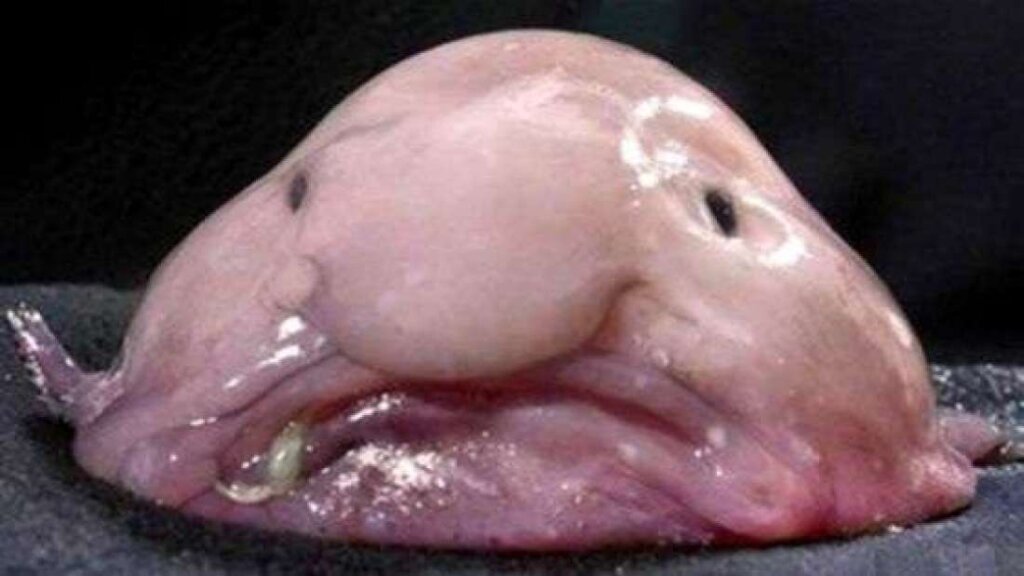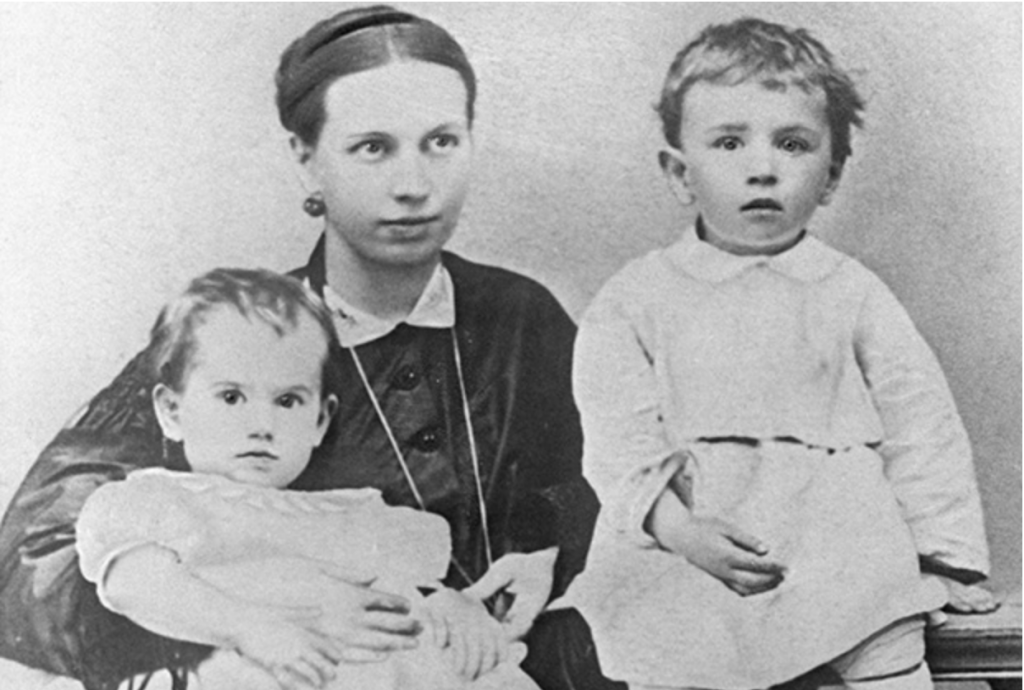Geoff Cebula holds a PhD. in Slavic Languages and Literatures from Princeton University and is author of the academic horror novel Adjunct (available for purchase at Amazon). The following blog post derives partially from his research, but even more from watching horror movies with his dog. It is an attempt to illustrate the principle tenets of the theory of horror advanced by Leonid Lipavsky, a Russian philosopher associated with the OBERIU poets (Daniil Kharms, Alexander Vvedensky, others), through an exploration of horror movies.
[Note: This is Part I of a two-part post. Part II will appear on Thursday.]
I. Splinter
The earliest dream I remember went something like this: I was at the grocery store with a female caretaker. (My mother? Grandmother? Both? Neither?) We were walking down the aisle past some jelly jars, when the ground started to shake. One of the jars fell to the ground and cracked open. (Focus on the stiff, faintly glistening hunks of coagulated jelly on the ground.) My caretaker was next to fall. The contents of her head were revealed to match those of the jar. I ran outside to the parking lot, only to find the ground heaving atop giant gelatinous mounds—I could see them between the cracks: they were yellowish like custard.
I don’t know how a psychologist would read this dream. (In fact, I would rather not.) But I think it goes a long way toward explaining my appreciation for Leonid Lipavsky’s “Investigation of Horror.” After all, his is the only analysis I’ve encountered so far to posit an unconscious fear of jelly.
Leonid Lipavsky is mostly remembered – to the extent that he is remembered – as a satellite member of the Russian avant-garde collective OBERIU. Like everyone else associated with this group, Lipavsky saw his professional and personal trajectory profoundly shaped by conflict with the Soviet state: Forced to abandon his formal study of philosophy at Petrograd University for refusing to denounce his teacher, the philosopher Nikolai Lossky (whose mid-career transition to religious philosophy led to exile in 1922), Lipavsky continued to write philosophical works in an unofficial capacity while holding jobs as a schoolteacher, editor, and children’s author. He died defending Leningrad from German invasion in 1941, leaving behind a slim, dense, and often elliptical body of texts.
(The full set is available in a Russian-language edition, while an Englished selection—omitting the “Investigation”—can be found in the excellent OBERIU: An Anthology of Russian Absurdism.)
For me, however, Lipavsky is, first and foremost, the person who gets jelly. “A child cries in fright,” he writes, “upon seeing jelly swaying on the plate. He is frightened by the quivering of this life-like, amorphous, and at the same time resilient mass.” This is part of his “Investigation of Horror,” where Lipavsky attempts to find a single basis for the experience of ‘horror’ (uzhas in Russian) in all its many forms. He writes:
“From our point of view, the quality of horror, i.e., the characteristic of engendering fear in living beings, is an objective characteristic of a thing—of its consistency, shape, movement, and so forth. […] “[F]ear” [strakh] is a proper name. There exists in the world only one fear, one principle of fear, which manifests itself in distinct variations and forms.”
So, why jelly?
Well, jelly represents “a kind of apparently illegitimate or unnatural animateness. Concentration and articulation correspond to organic life, but here is a diffuse, amorphous, and at the same time resilient mass, almost an inorganic life.” In other words, the problem with jelly is that it’s amorphous—but also somehow not amorphous enough. It has a recognizable form, an outline—those stiff peaks of goop sticking out of the shattered jar—but it’s unstable and poorly defined. It quivers.
Admittedly, jelly does not horrify everyone. While jelly-like monsters do exist in horror cinema, they tend to be relegated to the realm of camp. But there is arguably a deeper phenomenon at work here. According to Lipavsky, we fear any form of life that exhibits “quivering motion, in which there is no division between active and passive elements—all are equal in their turn.” Worms. Centipedes. A rat king, or the writhing of mice in a glue trap.
We find outrageous illustration of this core fear—the terror of unconcentrated life—in the realm of body horror. Take for instance the orgiastic finale of Society (1989/1992), in which [SPOILER] the social elite turn out to be a predatory species whose pliable bodies meld into each other in ways that I won’t link to (but could easily be searched). Or in a more machinist vein there is the entirety of Tetsuo: The Iron Man (1989), which I couldn’t resist linking to and beggars description. In both cases, the climax comes in the form of a mass of unconcentrated, quivering bodies, whose borders break down to form a vital mass that could, in principle, expand infinitely.
Perhaps the best illustration of this chaotic, reaching, growing, nonhuman life is the creature design from the relatively little-known recent horror flick Splinter (2008). Four people arrive at a gas station besieged by a mold-like parasite of uncertain origin. This organism seeks out blood to metabolize, assimilating bodies living and dead, animating severed body parts and sometimes stitching them together with fibers. The bodies reanimated by this parasite have large thorns sticking out of them and move in lurching fashion towards heat sources (often, though not consistently, without regard to the “front” of the host body). This is precisely the kind of “diffuse,” “amorphous,” and “resilient” life that Lipavsky imagined through jelly--only here, it is predatory and underneath our skin.
II. The Somnambulist
My own fascination with horror dates back to a kindergarten reading circle. It was probably around Halloween, since our teacher was reading us stories from the illustrated collection In a Dark Room and Other Scary Stories. I had liked the green-haired ghost of the titular story and found the general grim mood of the collection weirdly fascinating, but I was completely unprepared for “The Green Ribbon.” In this tale, a woman named Jenny goes through life wearing a ribbon around her neck; only on her deathbed does she allow her husband to remove it, at which moment—her head falls off. Of course, being in a book for young children, the scene is dutifully illustrated, and our whole class sat and admired the discolored head that someone had spun around and laid neatly on a throw rug next to the long, stiff fingers of its owner’s corpse.
Even though I placed a paper clip over that story to keep it hidden, the picture of her head haunted me long after. I panicked over anything that suggested an association: cartoon surgeries, spinning heads, and even a floating skull outside the haunted house at the boardwalk.
Let’s put aside the question of who decided “The Green Ribbon” was a children’s story. (Seriously.) Let’s also leave the Freudian interpretation repressed for now. Lipavsky would have us focus on both how simply the head leaves the body and how contentedly it seems to sit there on the rug. Consider what he says about the revulsion we feel upon seeing shed blood:
“There’s something too light and easy about the way it abandons its home and becomes a self-sufficient, warmish puddle—which may be living or not. […] Slowly leaving its captivity, the blood begins its own impersonal life—a life alien to us from its beginning—just the same kind of life as the trees or the grass live. It’s a red plant among the green ones.”
The head on the rug is no longer Jenny. Should it twitch, should its lips curl in a smile, it would be a sign not of her recovery, but of its own independent life. Lipavsky discusses the horror of fingernails growing on a corpse, a severed finger growing in a vial, or a dog’s severed head baring its teeth. We may add such standard horror fare as the cursed hand or the talking human head. In a somewhat altered form, this same line of thinking may account for fear of the undead:
“In general, fear of a corpse is fear of the possibility that it is still alive. What’s wrong with it being alive? It isn’t alive like we are. It’s an obscure life still wandering in the body. And there’s yet another life: decay. The fear is that these forces will raise the body up, that it will stand up and start walking like one possessed.”
We associate vampires and zombies with the world of horror, but we don’t always fear them. Twilight is a multi-billion dollar industry; there are fan factions devoted to shipping Spike and Buffy; the “zom com” subgenre exists. We simply don’t fear the walking dead if they appear to live and love like we do. It’s when they maintain the signs of death and nonetheless insist on moving that they can instill terror.
Lipavsky would tell us that the object of fear is not death per se, but the human body animated by another life. Consider the famous “spider walk” from The Exorcist. Or the crawling ghost of Ju-On. The frenetic motions of Pennywise in the latest IT adaptation (parodied in this SNL clip). In all these cases, the human form appears to be animated by some completely inhuman force--it becomes a vehicle of the uncontrolled life discussed above.
This fear also bleeds into how the horror genre often depicts the “madman” or the “somnambulist”—as another form of life in a human body. Consider also the creeping killers in slasher movies (most classically, Michael Myers or Jason Voorhees - both tortured children inside hulking bodies), who hide vague, seething torment behind implacable masks, and whose lumbering bulk mimic the somnambulist. They are human bodies moved by an inhuman force (be it rage, desire, “trauma,” or some supernatural force - the scripts are usually vague on this count). And Lipavsky suggests that ultimately we fear—above and beyond any direct physical threat they may pose—the nature of whatever moves them.



